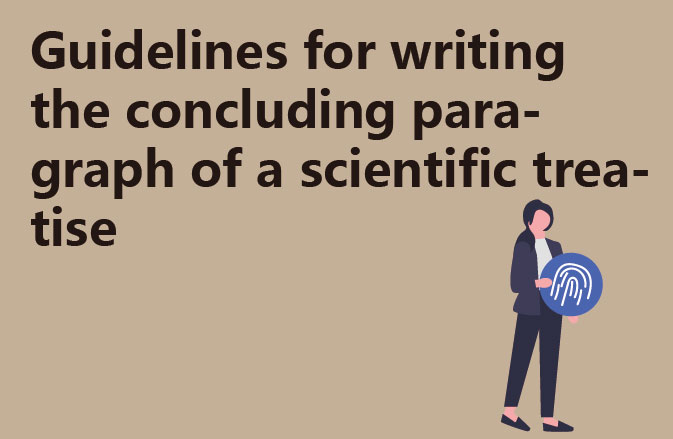I. Introduction
The purpose of this technical document is to provide researchers, especially those who are engaged in writing SCI (Science Citation Index) papers, with six important principles and their corresponding sample examples for writing the conclusion section of a paper. Through these guidelines and examples, we hope to help you better master the skills of writing the conclusion paragraph of the paper, further enhance the depth and strength of the paper, and strengthen the persuasive power of the paper.
Six key elements of the conclusion paragraph
1. Clear reference standards
In the process of writing the conclusion paragraph, it should be based on a comprehensive review of the experimental results, and always adhere to the principles, explore the differences and similarities, and generalise the universality and other key guidelines. In the face of unresolved issues, they should be faithfully reflected and never try to conceal or ignore the relevant data. At the same time, the novelty and progress of the thesis should be highlighted through cross-checking and analysing with past studies.
2. Citation and Retrospection
You must answer all the questions posed in the opening paragraph in the conclusion paragraph. While the introduction generally introduces specific cases gradually from general concepts, the conclusion needs to transition gradually from specific examples to principles and general ideas, emphasise the main findings of the study, and then discuss its relevance to the results of past academic research so as to illustrate its importance in real life.
3. Comparative research
When discussing the difference between current research and past achievements, we focus on evaluating the paper’s innovativeness, scholarly contribution, and potential for application in real-life applications. This helps us to promote communication and prosperity in academia, bridge knowledge gaps, and guide the future direction of the field.
4. Strengths and flaws
Convey the high quality of the paper by showing the reader the strengths of the research methodology and emphasising that the experimental techniques and the study sample are sufficiently rich, which will make it easier for editors and expert reviewers to be impressed. It is also important to admit your shortcomings in a timely manner and not to hide them too much, as honesty is the only way to win the reader’s trust.
5. Communicating value
When concluding a description of the importance of your research results, you should clearly explain the usefulness of your research in terms of theoretical knowledge, practical application, or field of practice. Make sure that the reader fully recognises the value of your research.
6. Accurate scope of conclusions
Be careful when presenting your ideas. Your argument should be limited to the interconnectedness of the actual phenomena observed, i.e., clearly reveal a part of the truth, and do not make too many complex and difficult to understand conclusions. Try to use simple and easy-to-understand language to explain the deep wisdom.
Third, sample examples of writing a conclusion paragraph
In addition, for high quality journals of SCI papers, the expression of the conclusion part especially needs to strive for exquisite precision. The following is a sample example of how to write an excellent conclusion paragraph for students’ reference:
Sample Conclusion Paragraph Example
1. Summary of key findings
The first thing you should do is to briefly summarise the main findings of the research and give a low-level outline of the research. For example, “In summary, this research revealed [key findings] and provided insight into [research question].”
2. Comparison with previous research
The next step should be to compare the research findings with past research, highlighting the contributions made and the uniqueness of the findings. For example, “By comparing the existing literature, we believe that our study has new contributions, especially in [similarities/differences with past research].”
3. Substantive impact and contribution: elaboration of the contribution of the research to the academic field and to practical applications
Reference should be highlighted to the significance of the research in guiding and informing practice. For example, “In addition to the academic field, our research has had far-reaching implications for [industry of practice]. Through this research, we have substantially improved our understanding of [field of study].”
4 Limitations and future directions
Finally, the limitations of our research were clearly recognised and directions for future improvement and development were indicated. For example, “Although we acknowledge that flaws like [limiting factor] existed in our study, we believe that future research will improve our understanding of this by implementing [suggested research protocol].”
5 Conclusion and relevance
In conclusion, this study not only optimises our theoretical understanding of [research topic], but also shows great potential for practical application.




